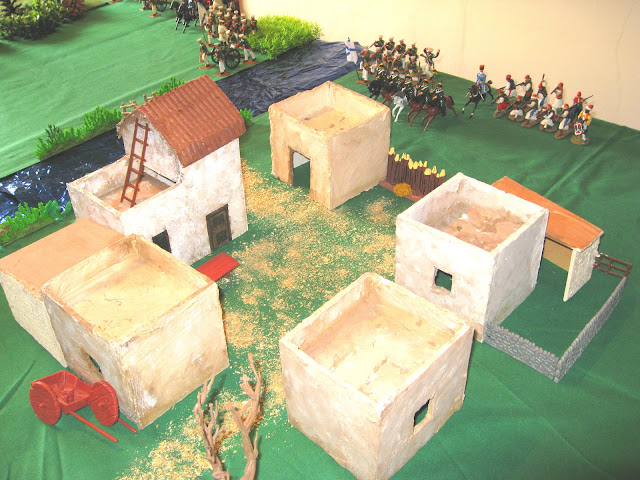A delightful day was spent in the countryside yesterday, where we held our third encounter in the C18th Funny Little Wars campaign. The weather was unseasonably fine and bright such that we could almost have played the game outside in the garden......almost but not quite.
The scenario chosen to playtest was the storming of a fortified town as a prelude to full blown siege operations.
The "Pragmatic" Army have occupied a town and their Command are in the Main Square to oversee the laying of guns and supervise the engineers who are hastily putting up barricades and revetments. This is the centre of their line and the guns have good clear fields of fire.
To the left the newly arrived Regiment Royal Ecossais hold the strongly walled perimeter of the churchyard, on their extreme left (out of picture) a regiment of Dragoons is posted on a low hill.
On the right of the "Pragmatic" line more French infantry and a regiment of dismounted Dragoons take up position behind the barricades among the outlying houses.
The "Army of Observation" have arrived on the outskirts of the town, after a careful reconnaissance their Command confer and decide on an immediate attack before the fortifications can be completed or enemy reinforcements intervene.
A full view of the table at the opening of the game. The main attack will be delivered on the right flank where the open country will allow the cavalry to deploy supported by three regiments of infantry. At the far end of the field a single regiment of infantry and a battalion of Bozniac Pandours will pin down the enemy's left flank while a company of Jaegers and a composite battalion of Grenadiers will make a demonstration against the enemy centre. Two mortars are also sited in the centre which will pound the town to Rubble!
The Game is afoot.






























































